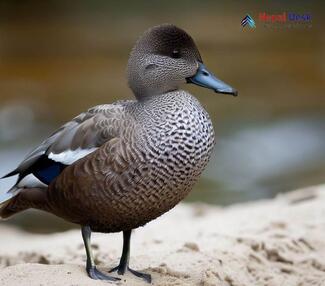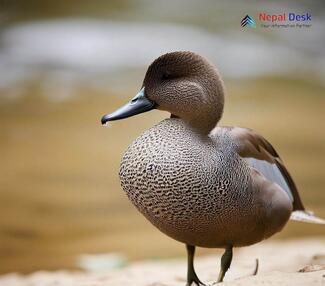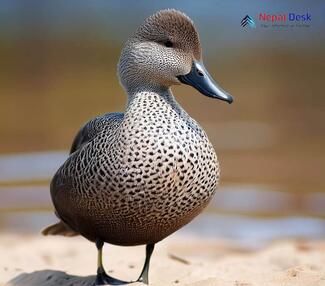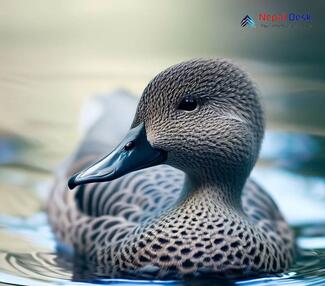Nestled between the towering Himalayas and lush green valleys, Nepal offers an astonishing array of bird species for both casual observers and ornithology enthusiasts alike. One such enchanting bird is the Gadwall (Mareca strepera), a medium-sized and often overlooked duck that inhabits the wetlands of this beautiful country. The gadwall was first described by Carl Linnaeus in his landmark 1758 10th edition of Systema Naturae. DNA studies have shown that it is a sister species to the falcated duck; the two are closely related to the three species of wigeons, and all of them have been assigned to the genus Mareca.
In this article, we will delve into the world of the Gadwall, exploring its unique features, habitat, and why it's worth seeking out during your next visit to Nepal.
Unraveling the Mystery and Habitat of the Gadwall
At first glance, the Gadwall may appear rather inconspicuous compared to its more colorful counterparts. Males exhibit predominantly gray plumage with intricate black-and-white patterns adorning their wings. The females don a subtler light brown coloration, perfect for blending into their surroundings. However, don't let their understated appearance deceive you—these birds are full of grace and elegance both in-flight and on water.
In Nepal, you can find the Gadwall residing within various wetland regions across the country. These adaptable ducks prefer shallow freshwater environments such as lakes, reservoirs, and marshes where they can freely feed on aquatic plant life. Some prime locations to spot these elusive birds include the famous Chitwan National Park and Koshi Tappu Wildlife Reserve.
The Fascinating Diet and Behavior of the Gadwall
Gadwalls possess a versatile diet consisting primarily of submerged and floating vegetation but also supplemented by insects and crustaceans when needed. Thanks to their meticulous feeding technique—dabbling at water surfaces instead of upending like other ducks—they can access nutrients more efficiently without disturbing their environment.
During the breeding season, male Gadwalls display fascinating courting behavior characterized by head-shaking, tail-wagging, and gently nibbling at the female's flanks to win her over. Once paired, the female diligently constructs a nest hidden from predators where she incubates her eggs for about 24-26 days.
Conservation and Your Role in Protecting the Gadwall
Whilst not classified as an endangered species, the Gadwall still faces threats from habitat destruction due to urbanization, pollution, and irresponsible hunting practices. By supporting conservation efforts within Nepal, such as visiting national parks and wildlife reserves, or spreading awareness about these incredible birds, you can play a crucial role in safeguarding their future.
In Conclusion
The Gadwall may not be as showy as some other ducks, but their understated beauty and intriguing behavior make them a remarkable addition to Nepal's diverse avifauna. Keep an eye out for these elegant creatures during your next wetland adventure in this picturesque country—witnessing them in their natural habitat is an incomparable experience that will linger long after your journey ends.




